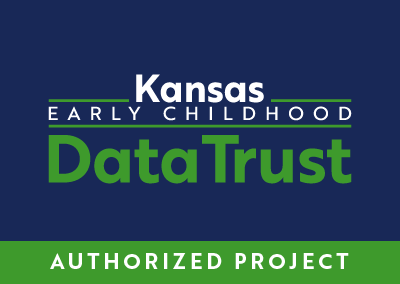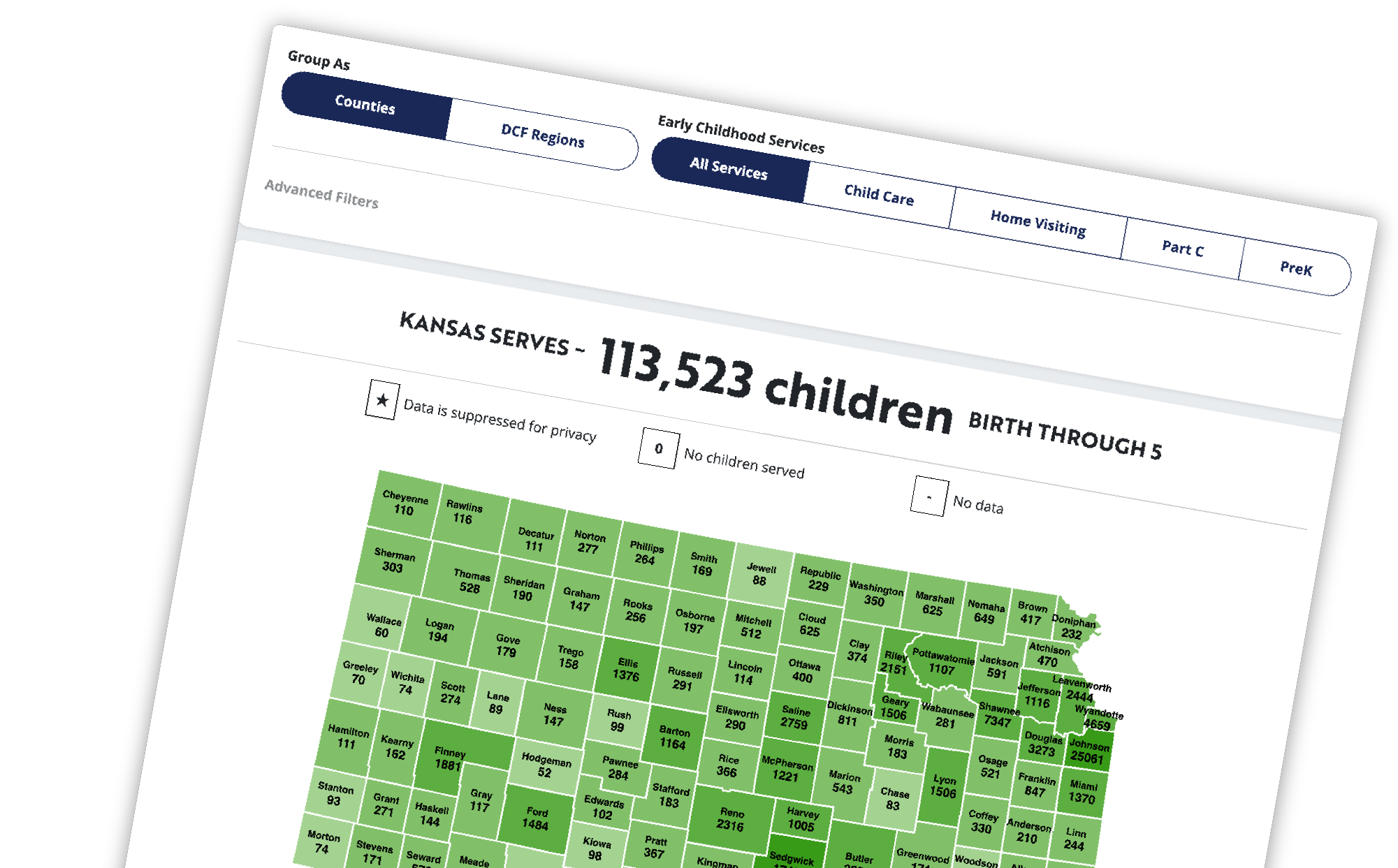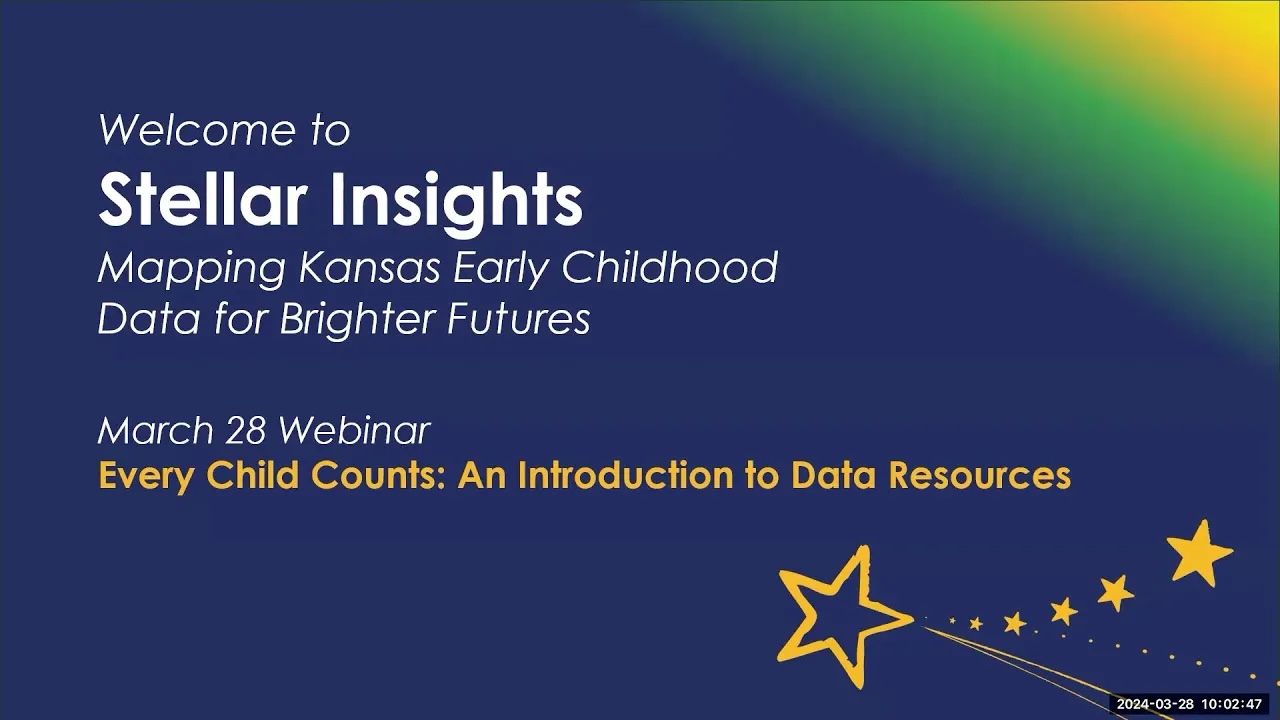Distinct Count System
Distinct Count of Children in Early Care and Education Services

Partners
Kansas Children’s Cabinet and Trust Fund
Kansas Department of Health and Environment
Kansas State Department of Education
Kansas Department for Children and Families
Type of Project
Resource Tool
Accurate, updated mapping of children served
- In-home visiting, childcare, Idea Part C, Idea Part B, and Pre-K/preschool programs administered across agencies funded by federal and state investments
- By demographic and risk/protective factors
- By geography and district
Status
Approved
March 3, 2022
Data Sharing Agreement
Under development
All in for Kansas Kids

Accessibility

Availability
Purpose
To ensure access to early care and education services and for the services themselves to be equitable and effective in meeting the needs of children and families, the Kansas Early Childhood Data Trust will be working with state agencies and several data systems to identify the distinct number of children being served in programs at the state and local level.
A distinct count of children accounts for each child receiving services and which program or a combination of programs are currently serving them. This valuable metric allows ECIDS data to identify areas for improvement and answer critical questions related to the state’s mixed-delivery system (a broad provision of services and supports that families may use concurrently based on their need), and also refines the state’s knowledge of child and family demographics as well as its capacity to provide services. To serve children and families effectively, the Kansas early childhood system must know the population it serves, and a distinct count of children will help inform how early care and education services support a child’s early learning and lifelong health and well-being.
Resource Information
Learn about available Kansas childhood data resources and best practices for using them.
March 28th, 2024

